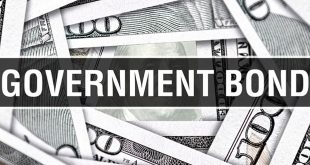The past trading week witnessed remarkable fluctuations coinciding with the beginning of the second quarter of the year 2024, as strong US economic data raised speculation about the ability of the US Federal Reserve to reduce interest rates and when it might make such a decision. The week concluded with the latest key jobs reports in the United States and Canada, which showed diverging trends between the two labour markets, with domestic payroll gains in Canada coming in well below estimates, while US job growth was much stronger than expected.
Major Central Banks Under Traders’ Radar
Markets remain largely focused on central banks’ moves and next steps regarding their monetary policies and the Bank of Canada may be closer to an initial rate cut given economic and inflationary trends. Meanwhile, the US economy’s strong performance has heightened concerns about the timing and size of federal interest rate cuts this year.

Labour market conditions, along with inflation trends, equally govern central banks’ decisions on interest rates, and traditionally this has been the criterion that has driven market performance over the past two years. The full focus last week was on the first variable in that equation, as the latest jobs reports provided a fresh look at the labour market conditions. The data revealed different trends between Canada and the United States, and the interpretation of the data was different in the two countries, as the markets found themselves stuck between encouraging a strong economy and wanting data that supports the shift towards lowering interest rates.
Labour market conditions in both Canada and the United States
Business conditions in Canada are showing signs of weakening, although the labour market remains in good shape overall and the US non-farm payrolls report for March shows that business conditions remain healthy, but the significant tightening in the labour market, which has been the hallmark, is believed to be Consumer spending and GDP growth are above trend over the past few years and are set to weaken through the rest of this year.
Canada’s economy saw a surprising decline in employment in March, with 2,200 jobs lost and most of the weakness concentrated in the services sector (professional services, accommodation and food services) and self-employment payrolls, while the goods production and construction sectors saw strong gains. It is believed this may be evidence of a slowdown in discretionary spending, accompanied by a rebound in construction activity helped by better weather and Canada’s job losses last month, providing an indication of a reversal of a strong trend in payroll gains at the start of the year.
US Employment Data
The addition of 303,000 new jobs in the United States in March can be described as strong beyond expectations. This number exceeded expectations of 200,000 and represented the strongest monthly gain in almost a year. Hiring was particularly notable in the health care, government, construction, entertainment and hospitality sectors, where Total employment in the latter sector is now officially back to pre-pandemic levels, and job growth has also accelerated in recent months, although some analysts expect it to gradually slow this year.

Upward Trajectory, Continued Positive Outlook for Stock Markets
Markets closed the difficult week higher, with the strong jobs report seen as an indication that economic growth, and therefore corporate earnings’ growth, remains on an upward trajectory, which should provide broader support for a stock bull market, and it is now widely believed that some challenges will emerge. Along the way, but it is also believed that there is sufficient evidence to support a positive outlook for stocks.
Gold Price Performance, New All-Time High
The price of an ounce of gold witnessed fluctuations during the trading week from April 2 to 6, 2024, recording the lowest price at $2,267.50 per ounce on Friday before the employment data, jumping in the wake of the release of the US data later the same day to the highest levels of the precious metal with a historic record at $ per ounce.
Gold soars amid global tensions
Gold made a significant rally to an all-time high, underscoring its safe-haven role and challenging both the US dollar and rising non-farm payrolls. Geopolitical risks, physical demand and US dollar-linked fundamentals continued to push the price of gold higher. The price of gold reached $2,323.84 per ounce, an increase of 1.50%. Amid escalating geopolitical concerns in the Middle East, any further escalation may lead to increased pressure on gold prices, with traders targeting the $2,350 level.
The gold market is expected to continue rising as buying gains renewed momentum and even in overbought conditions above the 70.00 level, the RSI is indicating an uptrend and since there are no signs of a decline in price activity, the $2350 level is possible. On the other hand, $2,300 will be the first support level followed by $2,250. The war in Ukraine continues to impact commodity markets, including gold, as investors look for a safe haven for their money.
The European Central Bank is preparing to cut interest rates in isolation from the US Federal Reserve, but…
The European Central Bank insists it will not follow the US Federal Reserve’s lead as it prepares to start cutting interest rates first, but its subsequent policy path may nonetheless be shaped by what happens in the US.
Trends in the world’s largest US economy usually do not last long in other regions, directly affecting financing conditions, exchange rates, inflation, trade and other longer-term metrics. So, policymakers elsewhere cannot escape the appeal of the US Fed when assessing the fate of their own economies.
For European Central Bank officials who meet next Thursday to discuss when, how quickly and by how much to reduce their stringent monetary tightening, that means keeping a close eye on the United States — even as they stress they will chart their own course.
In theory, the ECB could certainly move before the US Fed. It is difficult to envision policy differentiation for longer – say nine months and beyond – because what drives the Fed’s decisions will eventually trickle down to Europe and affect the Eurozone as well.
Policymakers led by Christine Lagarde began preparing markets for an initial cut on June 6 as price pressures quickly eased. While they strongly rejected the idea that they wanted to align their policy with Federal Reserve Chairman Jerome Powell, they did not commit to what would happen after the first step, arguing that the economic data would decide the matter and traders believe that the European Central Bank will likely implement four interest rate cuts this year, While they are divided on whether the Fed will cut rates two or three times after Powell reiterated on Wednesday that he is in no rush to start lowering borrowing costs.

More than two years after Powell’s tightening and rate-hiking cycle began, the US economy has proven remarkably resilient, with employers still hiring workers at a strong rate. If it continues this strong, it could also support the European economy, which only narrowly avoided recession in the winter.
“With regard to inflation, it is too early to determine whether the latest readings represent more than just a temporary rebound,” Powell said on Wednesday in a speech at Stanford University in California, adding: “We do not expect it to be appropriate to lower our policy rate until we are more confident that inflation will “Sustainably moving towards 2%.”
Recent reports have shown signs of a nascent recovery in Europe, where purchasing managers see imminent growth and improved business confidence as well. Meanwhile, inflation in the 20-nation eurozone slowed more than expected in March, and is approaching the European Central Bank’s target of 2.4%. The ECB has proven in the past that it can decouple from the US Fed – when it cut interest rates in… December 2015 and again in March 2016, the US central bank was embarking on a three-year period of tightening, and the Swiss National Bank had already unexpectedly cut borrowing costs in March, to prevent the franc from appreciating.
The European Central Bank insists that it will cut interest rates before the US Federal Reserve, but its path may be affected by what happens in the United States. Policymakers in Europe are closely monitoring the US economy, even as they stress that they will set their own course, but there is a risk that the paths will diverge. The policy between the European Central Bank and the US Federal Reserve leads to fluctuations in currency rates and financial markets.
Oil Prices
Crude oil prices witnessed a turbulent week during the period from April 2 to 6, 2024, with significant fluctuations in the prices of Brent and West Texas Intermediate crude oil, and the most important factors that affected energy markets during this week:
OPEC+ Meeting: On April 2, the OPEC+ alliance held its monthly meeting to discuss production levels and the group decided to keep current production levels unchanged, which initially led to lower prices. The war in Ukraine continues to cast a shadow over global energy markets, with concerns persisting. Regarding oil and gas supplies, these concerns led to higher prices at times during the week. US inventory data revealed an increase in crude oil inventories, which led to lower prices at the end of the week.
The April 3 policy decision by OPEC+ led to a spike in international crude prices to their highest in five months. With the spike in prices, benchmark Brent crude futures was trading at $90 per barrel, a level last seen in October 2023.
USD, Euro
The trading week from April 2 to 6, 2024 witnessed notable fluctuations in the performance of both the US dollar index and the euro, with the two currencies affected by various economic and political factors, led by US jobs data: The US jobs report for March showed strong job growth, which led to a rise in the dollar index. US Federal Reserve officials made statements during the week tending to keep monetary policy tightening for longer.
Cryptocurrency Performance:
The total trading volume of spot cryptocurrencies and their derivatives on centralized exchanges nearly doubled to an all-time high of $9.1 trillion in March, when the price of Bitcoin reached a record high. The rise in spot trading volume exceeded the gains recorded in derivatives trading values, as trading volume rose. 108% to $2.94 trillion, which is the highest monthly figure since May 2021, and the trading volume on the “Binance” platform, the largest cryptocurrency exchange in the world, reached its highest levels since May 2021, as instant transactions jumped 121% to $1.12 trillion, and executions increased. Derivatives rose 89.7% to $2.91 trillion.
The Week Ahead
Global financial markets enter the new week in a state of anticipation as inflation data and corporate earnings season approach. This data is likely to significantly influence the direction of the markets in the coming weeks.
Inflation Data under Traders’s Radar
The focus this week will be on the March Consumer Price Index (CPI) and Producer Price Index (PPI) reports, which could significantly influence the Federal Reserve’s interest rate decisions. US CPI reports in recent months have been pivotal moments for markets. Finance.

Perplexing Earnings Season
US corporate earnings season begins, with companies expected to achieve 3% growth in earnings per share for the first quarter. Although this represents a slowdown compared to the fourth quarter of 2023, it is important to note that pre-season expectations are the highest in nearly two years.
 Noor Trends News, Technical Analysis, Educational Tools and Recommendations
Noor Trends News, Technical Analysis, Educational Tools and Recommendations





